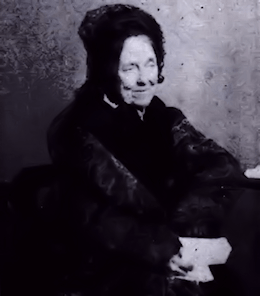Textus Receptus Bibles
Julia E. Smith Translation 1876
| 35:1 | The desert and the dryness shall be glad for them; and the sterile region shall rejoice and blossom as the meadow flower. |
| 35:2 | Blossoming, it shall blossom and rejoice, also with joy and shouting: the glory of Lebanon was given to it, the majesty of Carmel and Sharon they shall see the glory of Jehovah, the majesty of our God. |
| 35:3 | Strengthen the relaxed hands and make firm the feeble knees. |
| 35:4 | Say to those hasty of heart, Be strong ye shall not fear; behold, your God will come with vengeance, the recompense of God; he will come and save you. |
| 35:5 | Then shall the eyes of the blind be opened, and the ears of the deaf shall be opened. |
| 35:6 | Then shall the lame one leap as the stag, and the tongue of the dumb shall give forth the voice: for waters brake forth in the desert, and torrents in the sterile region. |
| 35:7 | And the dry was for a pool, and the thirsty land for fountains of water: in the dwelling of jackals its lying down, an enclosure for the reed and the bulrush |
| 35:8 | And a highway was there, and a way, and it shall be called to it, A way of holiness; the unclean one shall not pass through it; and it is for them; he going the way, and the foolish shall not err. |
| 35:9 | The lion shall not be there, and the rapacious beast shall not go up upon it, it shall not be found there; and the redeemed went |
| 35:10 | And the ransomed of Jehovah shall turn back and come to Zion with a shout of joy and eternal joy upon their heads: and they shall attain joy and gladness, and sorrow and sighing shall flee away. |

Julia E. Smith Translation 1876
The Julia Evelina Smith Parker Translation is considered the first complete translation of the Bible into English by a woman. The Bible was titled The Holy Bible: Containing the Old and New Testaments; Translated Literally from the Original Tongues, and was published in 1876.
Julia Smith, of Glastonbury, Connecticut had a working knowledge of Latin, Greek and Hebrew. Her father had been a Congregationalist minister before he became a lawyer. Having read the Bible in its original languages, she set about creating her own translation, which she completed in 1855, after a number of drafts. The work is a strictly literal rendering, always translating a Greek or Hebrew word with the same word wherever possible. Smith accomplished this work on her own in the span of eight years (1847 to 1855). She had sought out no help in the venture, even writing, "I do not see that anybody can know more about it than I do." Smith's insistence on complete literalness, plus an effort to translate each original word with the same English word, combined with an odd notion of Hebrew tenses (often translating the Hebrew imperfect tense with the English future) results in a translation that is mechanical and often nonsensical. However, such a translation if overly literal might be valuable to consult in checking the meaning of some individual verse. One notable feature of this translation was the prominent use of the Divine Name, Jehovah, throughout the Old Testament of this Bible version.
In 1876, at 84 years of age some 21 years after completing her work, she finally sought publication. The publication costs ($4,000) were personally funded by Julia and her sister Abby Smith. The 1,000 copies printed were offered for $2.50 each, but her household auction in 1884 sold about 50 remaining copies.
The translation fell into obscurity as it was for the most part too literal and lacked any flow. For example, Jer. 22:23 was given as follows: "Thou dwelling in Lebanon, building as nest in the cedars, how being compassionated in pangs coming to thee the pain as in her bringing forth." However, the translation was the only Contemporary English translation out of the original languages available to English readers until the publication of The British Revised Version in 1881-1894.(The New testament was published in 1881, the Old in 1884, and the Apocrypha in 1894.) This makes it an invaluable Bible for its period.